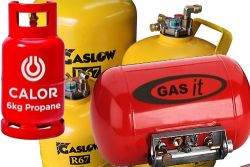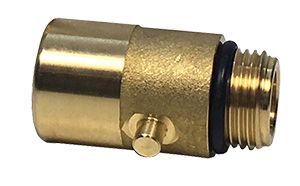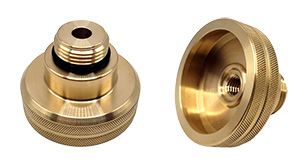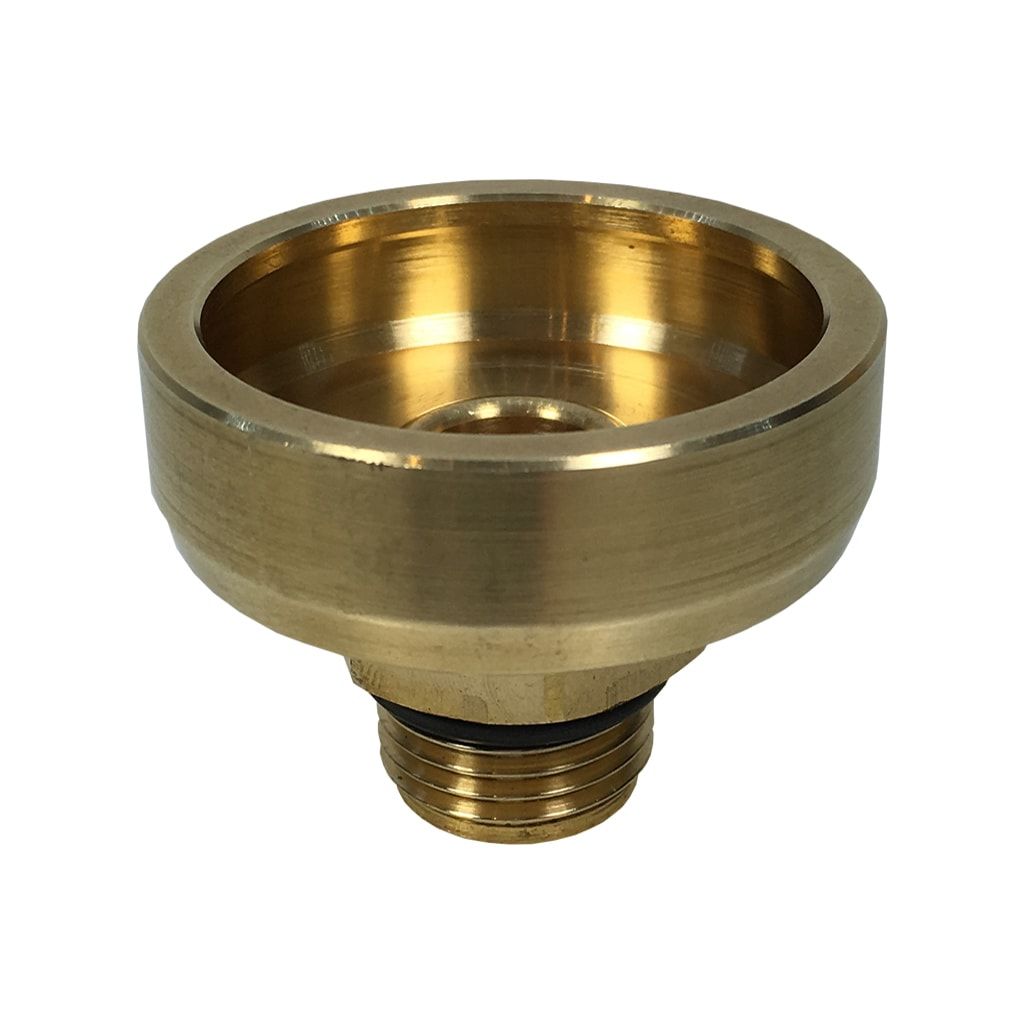Gas - Refillable or non-refillable

Refillable or Non-refillable
When deciding between refillable and non-refillable fuel systems for a motorhome, it's essential to weigh the pros and cons of each option to determine the best fit for your travel needs. Refillable systems, such as propane tanks that can be refilled at service stations, offer convenience and long-term cost savings. However, they require more initial investment and regular maintenance. On the other hand, non-refillable systems, which typically use disposable canisters, provide ease of use and lower upfront costs but can be more expensive over time and generate more waste. Understanding these trade-offs can help motorhome owners make an informed decision that enhances their travel experience.
Below are some simple questions to ask yourself to decide if it is acually worth upgrading
If you mostly stay in the UK and stay on campsites, then purchasing bottled gas would be my first choice. However, if you often go offsite or travel outside the UK, the choice becomes less clear-cut may actually be worth considering.
This can be a very important factor when deciding to upgrade. There is a large cost involved, even when just purchasing refillable gas bottles and getting a return on this investment.
Despite the fact that replacing a gas bottle may cost around three times the price of refilling it, if you only go through 1 or 2 gas bottles a year, it could take several years to recoup your investment.
- Years to recoup investment= (Cost of new bottle−Cost of refill)×Number of bottles per year devided by Cost of new bottle
There are two main types of refillable. Either tanks or gas bottles.
- Gas bottles are not your standard bottles and are supplied from various manufactures - for example FlowGas.
- Underslung gas tank - this is a special cylinder fixed normally just below the vehicle.
Gas Bottles: These aren't your standard bottles and are supplied by various manufacturers, like FlowGas.
- Pros: Easy to swap out, widely available, and you can carry spares. Generally considered a DIY install.
- Cons: Need to be manually replaced, which can be cumbersome, and might take up storage space.
Underslung Gas Tank: This is a special cylinder typically fixed underneath the vehicle.
- Pros: Saves space inside the motorhome, easy to refill at service stations, and provides a larger capacity. Usually requires professional installation.
- Cons: Higher initial installation cost and may require more maintenance.
Overview
Refillable gas tanks, often installed as underslung tanks beneath the motorhome, provide a convenient and efficient way to manage your gas supply. Here, we'll explore the advantages and disadvantages of this option.
Pros
-
Space Saving
- Benefit: An underslung gas tank is installed underneath the vehicle, freeing up valuable storage space inside your motorhome. This is particularly advantageous for those with limited interior space.
-
Ease of Refilling
- Benefit: Refillable gas tanks can be easily refilled at LPG service stations, reducing the need to frequently change gas bottles. This is convenient for long trips and minimizes interruptions during your travels.
-
Larger Capacity
- Benefit: These tanks typically have a larger capacity than standard gas bottles, providing a longer duration of gas usage before needing a refill. This is ideal for extended trips or when camping off-grid.
-
Cost Efficiency
- Benefit: Over time, refilling a gas tank is generally cheaper than purchasing new gas bottles. The initial investment in a refillable system can be offset by the lower ongoing fuel costs.
-
Environmental Impact
- Benefit: Reducing the number of disposable gas bottles decreases waste, making refillable tanks a more environmentally friendly option.
Cons
-
Initial Installation Cost
- Drawback: The upfront cost for purchasing and installing a refillable gas tank can be significant. This includes the price of the tank itself and professional installation fees.
-
Professional Installation
- Drawback: Installing an underslung gas tank usually requires professional installation. This can be an inconvenience and adds to the overall cost.
-
Maintenance Requirements
- Drawback: Refillable gas tanks may require more maintenance than standard gas bottles. Regular checks and occasional servicing are necessary to ensure the system remains safe and functional.
-
Refill Station Availability
- Drawback: While refillable gas tanks are convenient, finding LPG refill stations may be challenging in certain areas. It’s important to plan your routes with refill locations in mind, especially when traveling in remote or less-developed regions.
-
Weight Considerations
- Drawback: An underslung gas tank adds weight to your motorhome. This could affect fuel efficiency and handling, particularly if your motorhome is already close to its weight limit.
Conclusion
Fitting a refillable gas tank in your motorhome offers numerous benefits, including convenience, cost savings, and environmental advantages. However, it also involves a significant initial investment, requires professional installation, and may necessitate more frequent maintenance. Consider your typical travel patterns, budget, and ability to access refill stations when deciding whether a refillable gas tank is the right choice for you.
By carefully weighing these pros and cons, you can make an informed decision that best suits your motorhome lifestyle.
Overview
Refillable gas bottles, which can be filled at LPG stations, provide flexibility and convenience for motorhome users. Here, we explore the advantages and disadvantages of this option.
Pros
-
Cost Efficiency
- Benefit: Refillable gas bottles can be refilled at a lower cost compared to purchasing new disposable gas bottles. Over time, this can lead to significant savings, especially for frequent travelers.
-
Ease of Refilling
- Benefit: Refilling gas bottles at LPG stations is generally straightforward and convenient, allowing you to replenish your gas supply without needing to buy and store new bottles.
-
Environmental Impact
- Benefit: Using refillable bottles reduces waste, as it eliminates the need for disposing of empty disposable bottles. This makes it a more environmentally friendly option.
-
Flexibility
- Benefit: Refillable bottles can be swapped out for filled ones if you have multiple bottles, ensuring that you always have a backup supply. This can be especially useful during extended trips or in remote areas.
-
Portable
- Benefit: Unlike underslung tanks, refillable bottles are portable and can be easily removed and refilled, providing more flexibility in managing your gas supply.
-
DIY Installation
- Benefit: Refillable gas bottles are relatively easy to install and do not typically require professional installation. This can save on initial setup costs and allows for more user control.
Cons
-
Initial Cost
- Drawback: The initial purchase of refillable gas bottles can be higher compared to disposable bottles. However, this cost can be offset by the long-term savings on refills.
-
Refill Station Availability
- Drawback: Finding LPG refill stations can be challenging in certain areas, particularly in more remote regions. It’s important to plan your travels with refill locations in mind.
-
Manual Handling
- Drawback: Refillable gas bottles need to be manually removed, transported, and refilled, which can be physically demanding. This might be inconvenient, especially for larger bottles.
-
Storage Space
- Drawback: Refillable bottles take up space inside your motorhome, which might be an issue if you have limited storage capacity. Carrying extra bottles as backups can further reduce available space.
-
Safety Concerns
- Drawback: Handling gas bottles involves safety risks, such as potential leaks during refilling and transport. Proper safety measures and regular checks are essential to mitigate these risks.
-
Regulatory Compliance
- Drawback: In some regions, there are specific regulations regarding the use and refilling of gas bottles. Ensuring compliance with these regulations can sometimes be a hassle.
Conclusion
Refillable gas bottles offer a flexible and cost-efficient solution for managing your motorhome’s gas supply. They are environmentally friendly and provide the convenience of easy refilling. However, they come with challenges, including the need for manual handling, storage space considerations, and the availability of refill stations.
By carefully considering these pros and cons, you can determine whether refillable gas bottles are the right choice for your motorhome adventures, ensuring you have a reliable and convenient gas supply on the road.
Refillable Gas fitting types - Country

- Fitting Type: UK Bayonet
- Description: The UK Bayonet fitting is commonly used in the UK and Ireland. It features a push-and-twist mechanism to secure the nozzle in place.
- Pros: Simple and secure connection, widely available at service stations in these countries.
- Cons: Limited to the UK and Ireland, requiring adapters for use in other countries.

- Fitting Type: Euroconnector (Dish)
- Description: The Euroconnector, also known as the Dish fitting, is prevalent across many continental European countries, including Germany, France, Italy, and Spain. It has a dish-shaped connector.
- Pros: Widely used across Europe, making it easy to find refilling stations.
- Cons: Requires an adapter for use in the UK and other regions with different fittings.

- itting Type: French (ACME) Connector
- Description: The French ACME connector is also used in parts of Belgium and Luxembourg. It features a large, screw-threaded connector.
- Pros: Robust and secure connection, common in French-speaking regions.
- Cons: Limited to certain areas, necessitating adapters for other regions.

- Fitting Type: German (DISH) Connector
- Description: Similar to the Euroconnector, the German DISH fitting is used in Germany, Austria, Switzerland, and several Eastern European countries.
- Pros: Commonly available in these regions, compatible with the Euroconnector.
- Cons: Requires adapters for regions outside continental Europe.

- Fitting Type: Italian Connector
- Description: The Italian connector, also known as the Italian Cup, is used in Italy and the Netherlands. It features a cup-shaped design.
- Pros: Standard fitting in these countries, ensuring easy access to refilling stations.
- Cons: Adapter needed for use in other countries.

- Fitting Type: ACME Threaded Connector
- Description: In North America, the ACME threaded connector is standard. It has a large threaded fitting for secure connections.
- Pros: Widely available across the USA and Canada, offering a robust connection.
- Cons: Not compatible with European fittings, requiring adapters for international travel.
Adapters and Compatibility
To ensure you can refill your LPG tanks or bottles while traveling, it’s essential to carry the appropriate adapters for the countries you plan to visit. Here are some tips for managing different fittings:
-
Carry a Set of Adapters
- Purchase a comprehensive adapter kit that includes the UK Bayonet, Euroconnector, French ACME, German DISH, and Italian connectors. This will ensure you are prepared for most European countries.
-
Check Compatibility
- Before refilling, check the compatibility of the LPG fitting at the service station with your motorhome’s system. Ensure that the adapter is securely fitted to avoid leaks.
-
Plan Ahead
- Research the types of fittings used in the countries on your travel itinerary. This can help you prepare and avoid any inconvenience at refilling stations.
-
Consult Local Resources
- When in doubt, consult local motorhome clubs, online forums, or service station attendants for advice on the appropriate fitting and adapter for your location.
Conclusion
Understanding the different types of LPG fittings used for motorhome refilling in various countries is crucial for a smooth and hassle-free travel experience. By carrying a set of adapters and planning ahead, you can ensure that you have the necessary equipment to refill your gas supply wherever your adventures take you. This preparation will allow you to enjoy your motorhome travels without worrying about gas refilling challenges.

